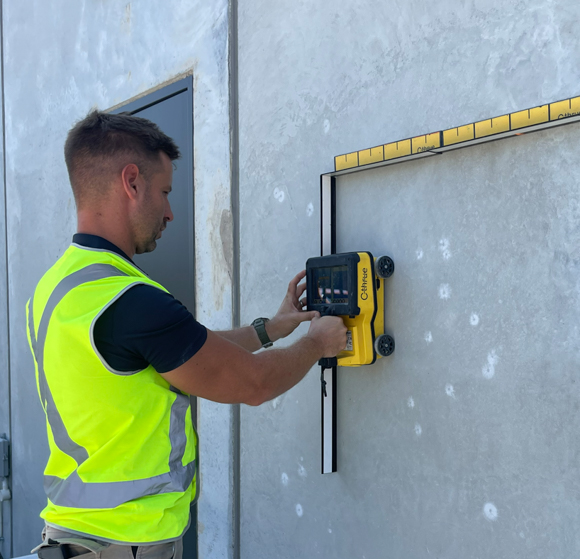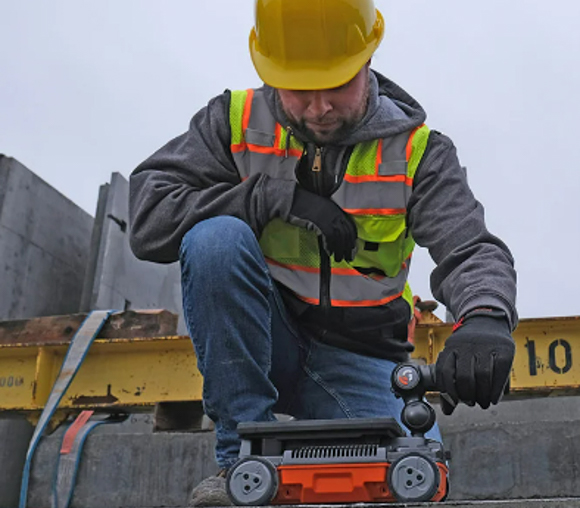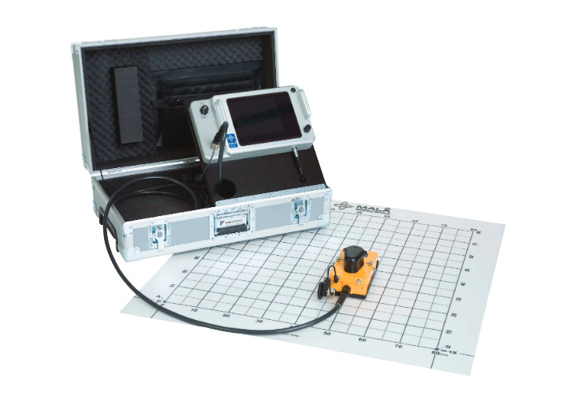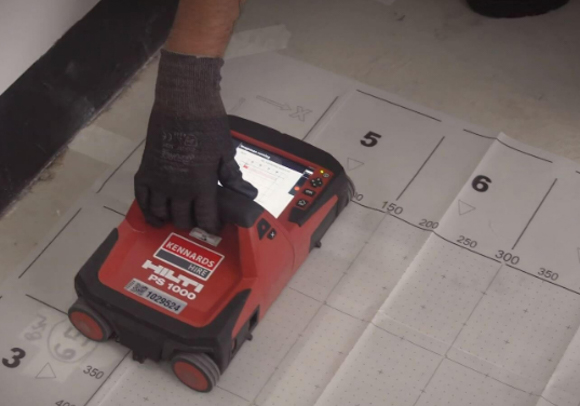Ground Penetrating Radar (GPR) concrete scanners have become indispensable tools for construction, civil engineering, and utility locating industries. These devices use electromagnetic waves to penetrate concrete surfaces and provide valuable insights about what lies beneath. In this article, we'll explore the pros and cons of five popular GPR concrete scanners: IDS Georadar C-Thrue, Proceq GP8000, GSSI mini and GSSI Flex (new model), Mala CX concrete scanner, and Hilti PS1000.
Let's take a look at these scanners in more detail:
IDS Georadar C-Thrue
Pros
- High Resolution: The IDS Georadar C-Thrue offers excellent resolution, allowing for precise detection of rebar, post-tension cables, and other embedded objects in concrete.
- User-Friendly Interface: It features an intuitive interface, making it accessible to both novice and experienced users.
- Real-Time Data: The device provides real-time data, allowing for immediate on-site decision-making and adjustments.
- Robust chassis and rugged design.
Cons
- High Price: The IDS Georadar C-Thrue tends to be more expensive than some alternatives, which might be a drawback for budget-conscious users.
- Limited Depth: It may have limitations in detecting deeper objects or structures due to its higher resolution.
- Learning Curve: For beginners, there might be a learning curve to maximise the scanner’s capabilities effectively.
- Limited functionality of on-screen function. Requires additional tablet for better resolution.
- No crosshair to accurate gauge depth on inbuilt screen interface.
- Limited resolution when exporting 3D data.

Proceq GP8000
Pros
- Versatile: The Proceq GP8000 offers versatility in applications, from concrete assessment to utility locating and bridge deck evaluation.
- Easy Data Interpretation: It provides user-friendly data visualisation and interpretation software, simplifying analysis for users.
- Robust Design: The scanner is built to withstand challenging conditions, making it suitable for demanding environments.
- Engaging and easy-to-navigate software interface.
Cons
- Limited Depth Penetration: The Proceq GP8000 may have restrictions in penetrating deeper concrete layers, limiting its usability for deep structural assessments.
- Costly Accessories: Some of the accessories required for certain applications can add to the overall cost of using the device.
- Learning Curve: Like other advanced GPR scanners, there may be a learning curve to fully exploit its capabilities.
- Expensive yearly subscription to use scanner (upwards of $6,000 AUD as of 2023).

GSSI XT Mini and GSSI Flex
Pros
- Compact and Portable: The GSSI XT Mini and Flex are portable, making them convenient for fieldwork and manoeuvring in tight spaces.
- Multi-Channel Array: The new Flex model features multi-channel array technology, enhancing data collection and accuracy.
- User-Friendly Software: Both models come with easy-to-use software for data analysis and visualisation.
- Palm antennae for those hard-to-reach places.
- GSSI flex can stream data to multiple devices.
- Mind-blowingly good 3D imaging.
Cons
- Limited Depth Penetration: These models may struggle with deep penetration, limiting their usefulness for certain applications.
- Limited Scan Width: The scan width might be narrower compared to some other models, which can affect the efficiency of larger projects.
- Price Range: Depending on the model and features, the price can vary significantly, potentially making them less accessible for smaller businesses.
- Customer service in Australia is limited.

Mala CX Concrete Scanner
Pros
- High-Penetration Capability: The Mala CX excels in deep penetration, making it suitable for assessing structural integrity in thicker concrete sections.
- Robust Construction: Its rugged design allows it to endure harsh working conditions, including outdoor and field applications.
- Wide Scan Coverage: This scanner offers a broader scan width, increasing efficiency for larger projects.
Cons
- Bulky Design: The Mala CX can be bulkier and less portable than some other models, making it less suitable for tight spaces.
- Steeper Learning Curve: It may require more training and experience to use effectively due to its advanced features.
- Higher Initial Cost: The upfront cost of the Mala CX is relatively high, which can be a barrier for smaller companies.

Hilti PS1000
Pros
- Compact and Ergonomic: The Hilti PS1000 is designed with ease of use in mind, with a compact and ergonomic design that minimises user fatigue.
- Real-Time Data Display: It provides real-time data on an integrated screen, allowing immediate interpretation of findings.
- User-Friendly Interface: Hilti’s user interface is known for its simplicity and ease of operation.
Cons
- Limited Depth Range: It may have limitations in deep scanning applications, which might be a drawback for certain projects.
- Limited Customisation: Users looking for advanced customisation options may find the Hilti PS1000 lacking in this aspect.
- Less Versatile: Compared to some other models, the Hilti PS1000 may not be as versatile in terms of application variety.

To Finish Off
Selecting the right GPR concrete scanner depends on specific project requirements, budget constraints, and user expertise. Each of the mentioned scanners offers distinct advantages and disadvantages, making it crucial to evaluate them in the context of your project’s needs. Consider factors such as scanning depth, resolution, portability, and overall cost when making your decision to ensure that you choose the scanner that best aligns with your goals and constraints. If you need concrete scanning services contact South East Scanning!